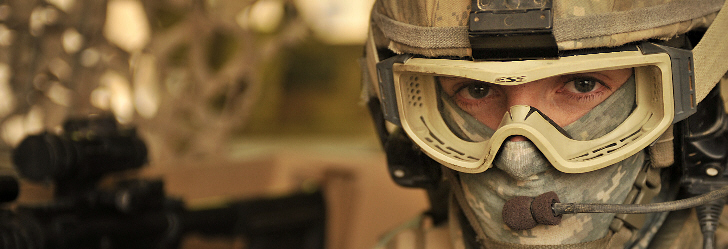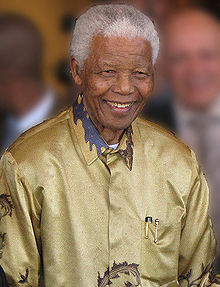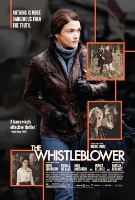Bone Marrow Aspirates with Spinal Needles in Resource Poor Countries
Dr. Alexander von Paleske, FA(med), FA (Haem/Onc) Mpilo-Hospital, Department of Haematology, National University of Science and Technology, Bulawayo, Zimbabwe - 18.4. 2018
Introduction
Patients presenting with unexplained anaemia and / or thrombocytopenia and/ or leukopenia or unexplained leukocytosis / thrombocytosis and erythrocytosis, require bone marrow aspirates.
In countries with a high incidence of HIV-disease and / or tuberculosis, anaemia is quite frequent.
In several studies we found Tuberculosis in 14 - 15% of unselected bone marrow aspirates (see below).
However bone marrow aspirates often cannot be performed, due to lack of equipment or manpower or both. The procedure is normally carried out with bone marrow aspirate needles size 16 gauche or trephine biopsy needles. In resource poor countries these needles are often not available.
Patients and Methods
In view of the limited amount of bone marrow needles available in our department, and the huge demand for bone marrow aspirates, we introduced spinal needles size 19G for bone marrow aspirates.
In the period from 1.1.2010 to 31.12. 2017 more than 4000 bone marrow aspirates were carried out with spinal needles, manufacturer Schilling, Gelnhausen, Germany. The patients age ranged from 5 weeks to 91 years.
The site for aspiration was in more than 95% the posterior iliac crest. In children less than 1 year the aspirate was taken from the tibia.
The needle was introduced into the bone marrow by gently twisting it clockwise anticlockwise until entering the bone . After entering the bone, pressure was applied and turning the needle clockwise until it had passed through roughly 2/3 of the bone thickness. The mandrin (inlay) was then removed and a 5ml syringe connected.
Under constant aspiration the needle was clockwise anticlockwise slowly moved backwards until marrow blood is aspirated.
The marrow blood was filled into an EDTA Tube (Full blood count tube). The direct spread on glass slides carries the risk off clotting in the syringe and does not allow TB culture.
Marrow blood was then poured on a glass slide, and drained back into the EDTA-Tube. The marrow fragments remained on the glass slide. These fragments were then collected with a second slide and spread gently on another slide. Six marrow slides were prepared that way.
After completing the procedure, the marrow blood was then sent to the TB-Laboratory for TB-culture and sensitivity together with one marrow slide for Ziehl-Neelsen staining.
Four of the remaining slides were stained with May-Gruenwald Giemsa, one slide for iron stores
Results
In 89,6 % the aspiration was sufficient for diagnosis.
No complications have been observed. Local anaesthesia was not required.
This procedure of aspiration takes less than 5 minutes and enables us to perform a large number of bone marrow aspirates on a daily basis.
Discussion
A few studies have shown, that disposable spinal needles are efficient in bone marrow aspirates, instead of bone marrow aspirate needles.The size of the spinal needles in these studies ranged from 16G to 22G.
We have shown, that disposable needles size 19G yield a sufficient amount of bone marrow fragments, and can be used in adults and children of all ages.
References
Nasira Shaheen, Zahra Rashid, Muhammad Qaiser Alam Khan, Waqar Azim (2012)
Efficacy of OF disposable Spinal Needle in Diagnostic Bone Marrow Aspiration , PAFMJ ( 2012).
E.E. Damasio, B. Masoudi et al. (2000) -
Bone marrow aspiration from the posterior iliac crest and spine using a sterile and pyrogen free disposable spinal needle (Yale Spinal 18 Gx31/2") without local anesthetic - Haematologica 85(8):871
Dinndorf PA, Clark BS, Bleyer WA. (1985)
Bone marrow aspiration with a 22-gauge spinal needle.
- J Pediatr. 1982 Apr;100(4):595-6
D. Cohen
Bone marrow aspirations employing 20-gauge spinal needles vs. wide gauge steel - J Assoc Pediatr Oncol Nurses. 1985 Spring;2(2):39-40
Satya Vara Prasad Busarla - Bone marrow aspiration in resource poor environment: Our experience in Kenya - Journal of clinical pathology 68(6) · March 2015
 Diagnosis of disseminated Tuberculosis in bone marrow aspirates - Results of a second study
Diagnosis of disseminated Tuberculosis in bone marrow aspirates - Results of a second study
E-Mail avonpaleske@yahoo.de
Introduction
Patients presenting with unexplained anaemia and / or thrombocytopenia and/ or leukopenia or unexplained leukocytosis / thrombocytosis and erythrocytosis, require bone marrow aspirates.
In countries with a high incidence of HIV-disease and / or tuberculosis, anaemia is quite frequent.
In several studies we found Tuberculosis in 14 - 15% of unselected bone marrow aspirates (see below).
However bone marrow aspirates often cannot be performed, due to lack of equipment or manpower or both. The procedure is normally carried out with bone marrow aspirate needles size 16 gauche or trephine biopsy needles. In resource poor countries these needles are often not available.
Patients and Methods
In view of the limited amount of bone marrow needles available in our department, and the huge demand for bone marrow aspirates, we introduced spinal needles size 19G for bone marrow aspirates.
In the period from 1.1.2010 to 31.12. 2017 more than 4000 bone marrow aspirates were carried out with spinal needles, manufacturer Schilling, Gelnhausen, Germany. The patients age ranged from 5 weeks to 91 years.
The site for aspiration was in more than 95% the posterior iliac crest. In children less than 1 year the aspirate was taken from the tibia.
The needle was introduced into the bone marrow by gently twisting it clockwise anticlockwise until entering the bone . After entering the bone, pressure was applied and turning the needle clockwise until it had passed through roughly 2/3 of the bone thickness. The mandrin (inlay) was then removed and a 5ml syringe connected.
Under constant aspiration the needle was clockwise anticlockwise slowly moved backwards until marrow blood is aspirated.
The marrow blood was filled into an EDTA Tube (Full blood count tube). The direct spread on glass slides carries the risk off clotting in the syringe and does not allow TB culture.
Marrow blood was then poured on a glass slide, and drained back into the EDTA-Tube. The marrow fragments remained on the glass slide. These fragments were then collected with a second slide and spread gently on another slide. Six marrow slides were prepared that way.
After completing the procedure, the marrow blood was then sent to the TB-Laboratory for TB-culture and sensitivity together with one marrow slide for Ziehl-Neelsen staining.
Four of the remaining slides were stained with May-Gruenwald Giemsa, one slide for iron stores
Results
In 89,6 % the aspiration was sufficient for diagnosis.
No complications have been observed. Local anaesthesia was not required.
This procedure of aspiration takes less than 5 minutes and enables us to perform a large number of bone marrow aspirates on a daily basis.
Discussion
A few studies have shown, that disposable spinal needles are efficient in bone marrow aspirates, instead of bone marrow aspirate needles.The size of the spinal needles in these studies ranged from 16G to 22G.
We have shown, that disposable needles size 19G yield a sufficient amount of bone marrow fragments, and can be used in adults and children of all ages.
References
Nasira Shaheen, Zahra Rashid, Muhammad Qaiser Alam Khan, Waqar Azim (2012)
Efficacy of OF disposable Spinal Needle in Diagnostic Bone Marrow Aspiration , PAFMJ ( 2012).
E.E. Damasio, B. Masoudi et al. (2000) -
Bone marrow aspiration from the posterior iliac crest and spine using a sterile and pyrogen free disposable spinal needle (Yale Spinal 18 Gx31/2") without local anesthetic - Haematologica 85(8):871
Dinndorf PA, Clark BS, Bleyer WA. (1985)
Bone marrow aspiration with a 22-gauge spinal needle.
- J Pediatr. 1982 Apr;100(4):595-6
D. Cohen
Bone marrow aspirations employing 20-gauge spinal needles vs. wide gauge steel - J Assoc Pediatr Oncol Nurses. 1985 Spring;2(2):39-40
Satya Vara Prasad Busarla - Bone marrow aspiration in resource poor environment: Our experience in Kenya - Journal of clinical pathology 68(6) · March 2015
E-Mail avonpaleske@yahoo.de
onlinedienst - 18. Apr, 19:46 Article 3304x read
















































